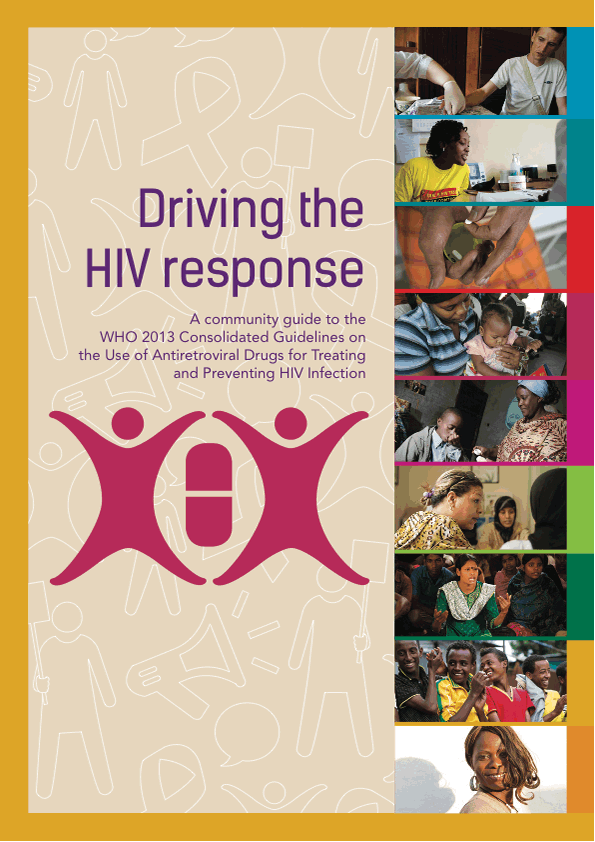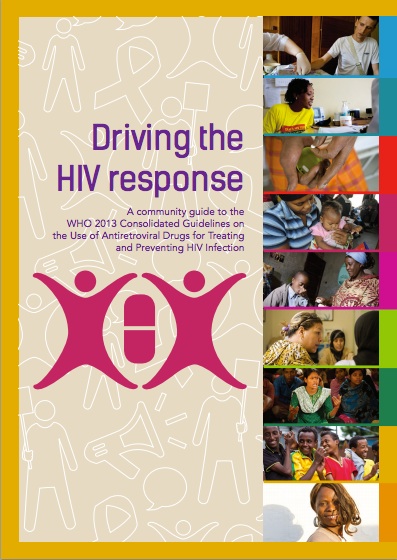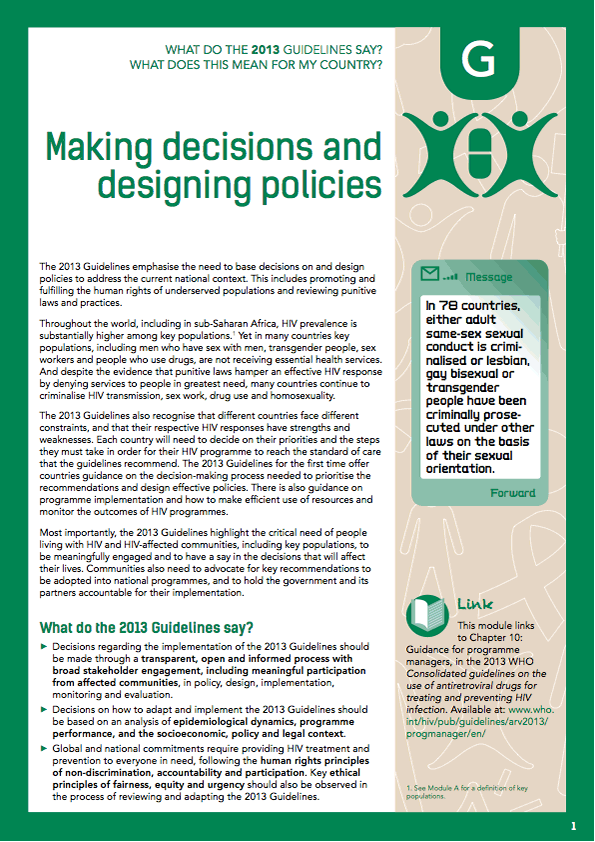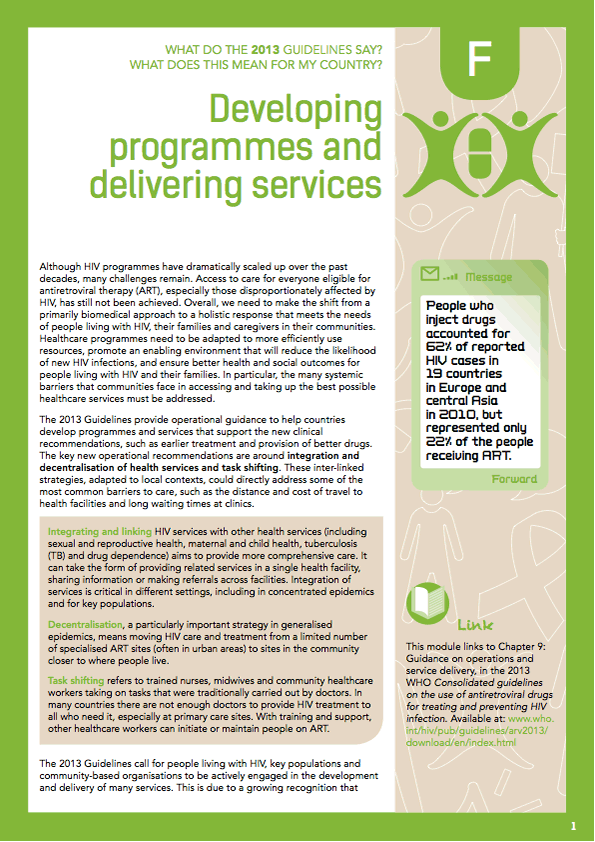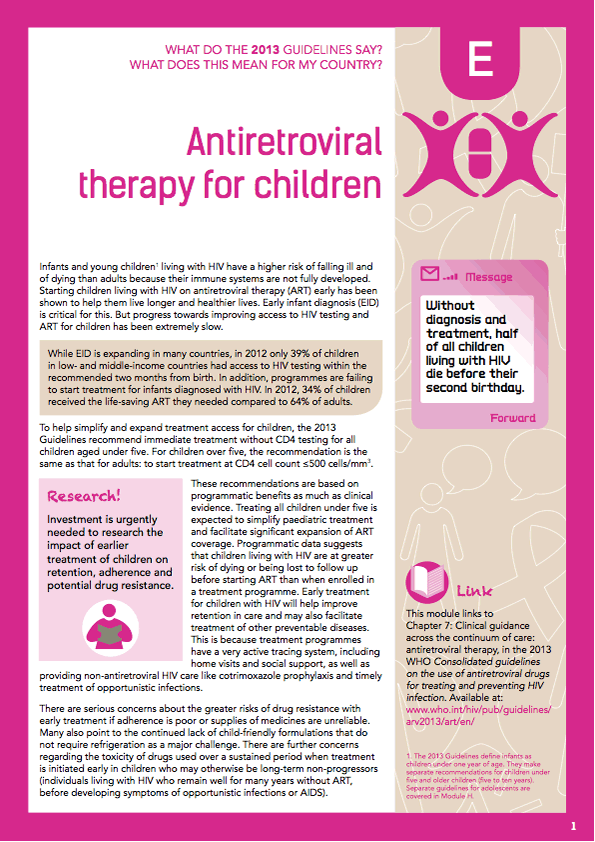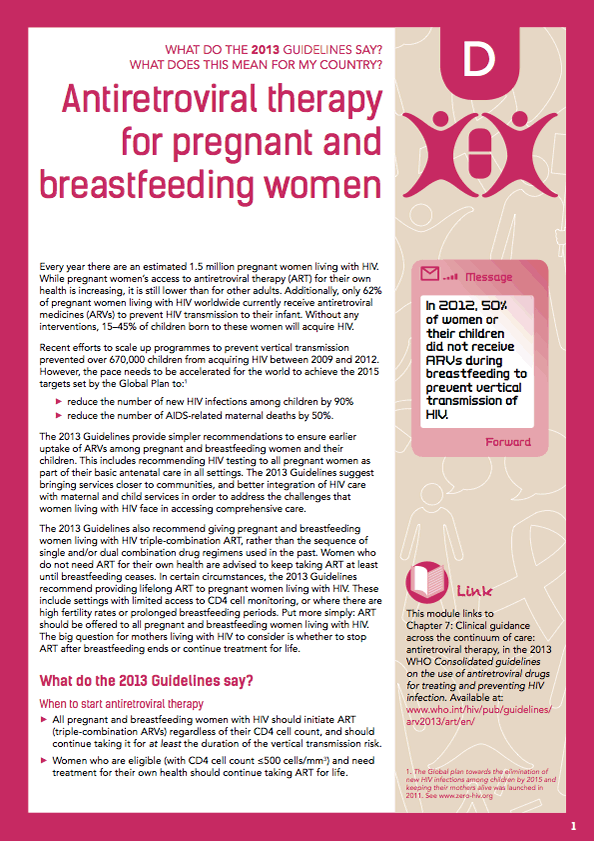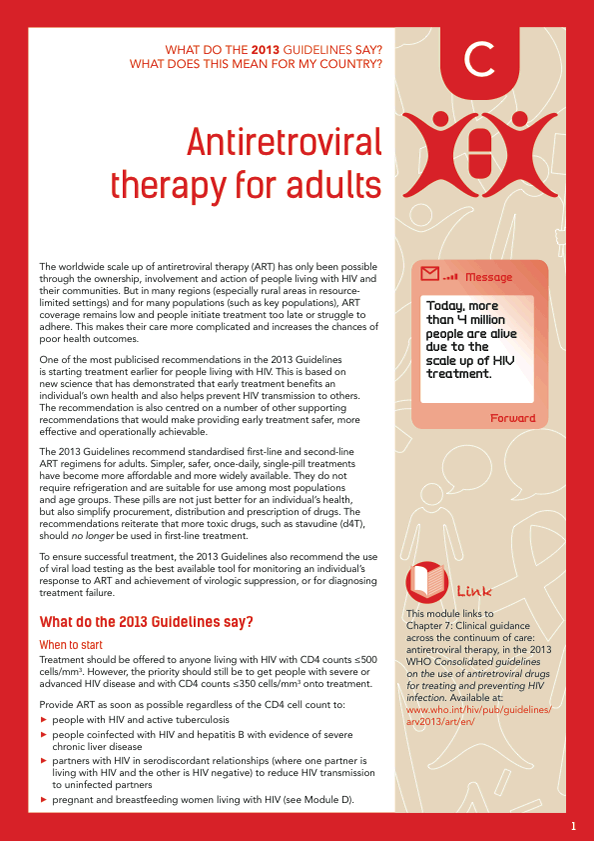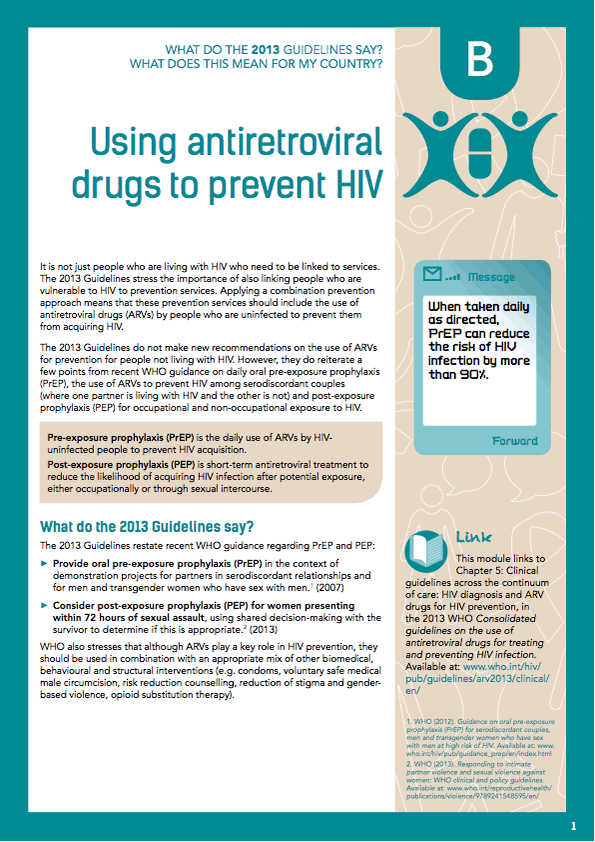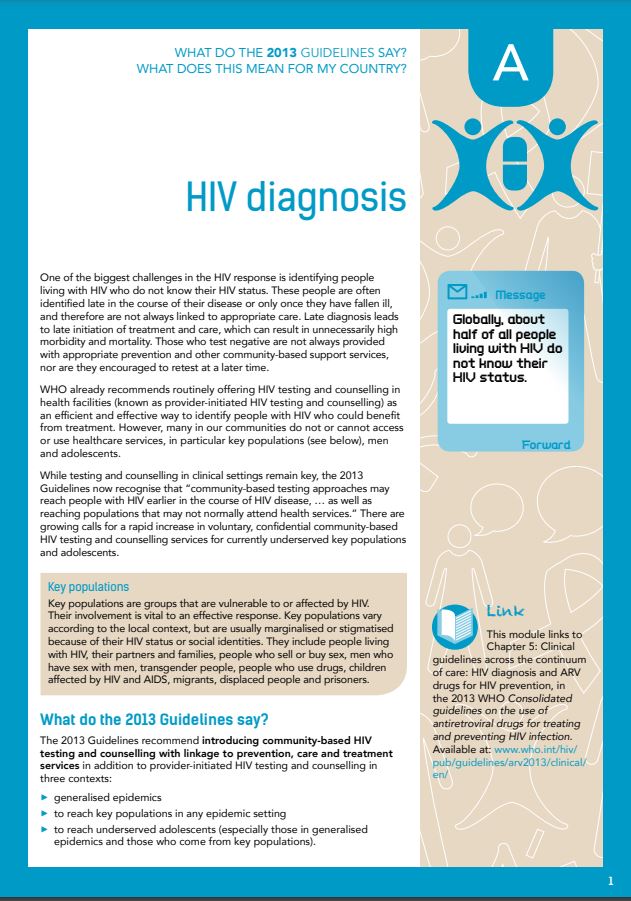In 2014, WHO produced the first ever Consolidated guidelines on HIV prevention, diagnosis, treatment and care for key populations. The Guidelines focus on five key populations: men who have sex with men; people who inject drugs; people in prisons and other closed settings; sex workers; and transgender people.
They present an opportunity for civil society, including networks of key populations and people living with HIV, to work with their governments to meaningfully involve key populations in national policymaking and begin investing in their specific needs. The Guidelines also offer an opening for dialogue and action on harmful laws, policies and societal norms that result in the denial and violation of human rights for key populations.
To support community organisation with the implementation of and advocacy for the Guidelines we created a new module for Key Populations to our Community Guide.
This set of modules is designed to be used by communities to support the use of the new resource, Driving the HIV response: A community guide to the WHO 2013 Consolidated Guidelines on the Use of Antiretroviral Drugs for Treating and Preventing HIV Infection.
The downloadable modules cover different topics, and include:
- An introduction to the Community Guide
- Module A: HIV diagnosis
- Module B: Using ARVs to prevent HIV
- Module C: ART for adults
- Module D: ART for pregnant women
- Module E: ART for children
- Module F: Programmes
- Module G: Policies
- Module H: Adolescents
- Module I: Key Populations
- Resources
The Global Network of People Living with HIV (GNP+), the International HIV/AIDS Alliance and STOP AIDS NOW! developed the Community Guide in response to the World Health Organization (WHO) 2013 Consolidated guidelines on the use of antiretroviral drugs for treating and preventing HIV. It aims to assist community leaders and civil society organisations to:
- better understand the new WHO recommendations and guide country-level discussions on priorities (within civil society and between civil society and government)
- ensure the meaningful participation of communities most affected by HIV in national decision-making and planning
- advocate for any changes or further research necessary to adapt recommendations to suit their country context
- mobilise and prepare communities for the implementation of new recommendations.




